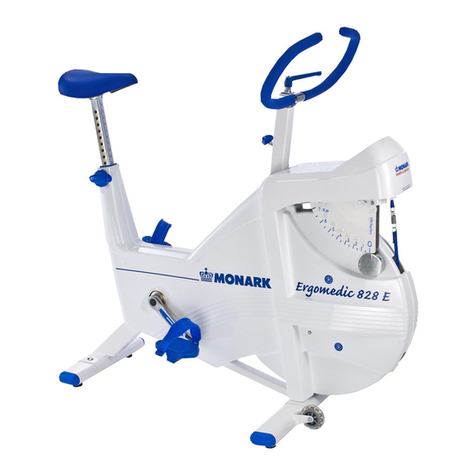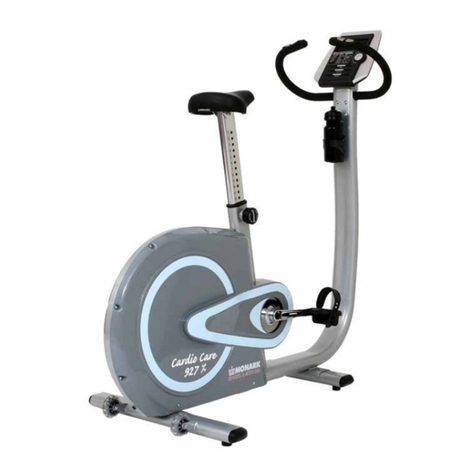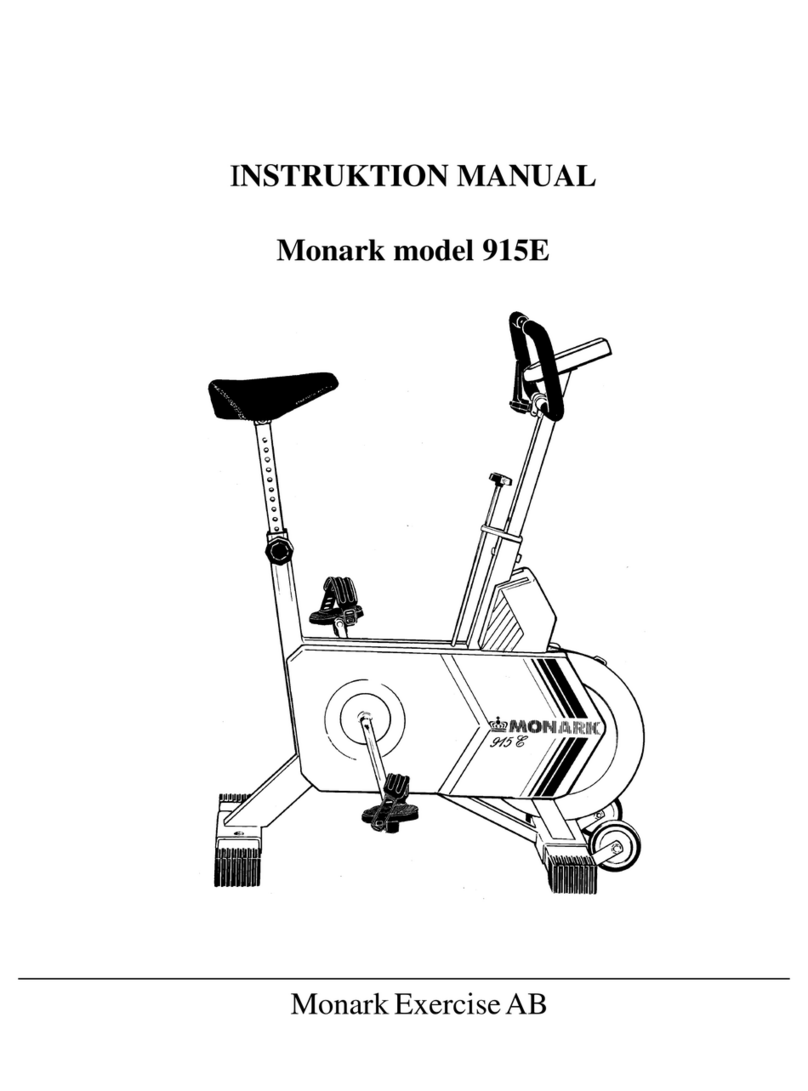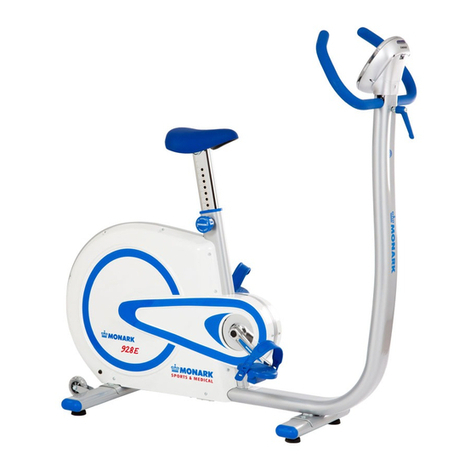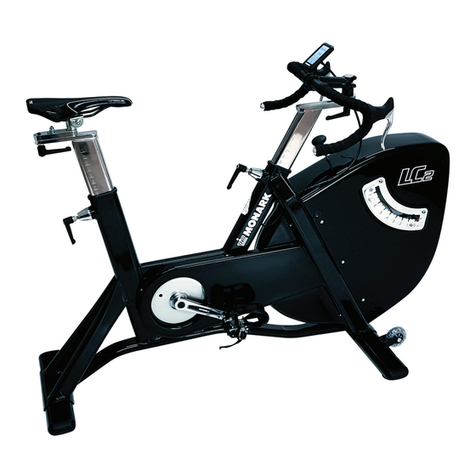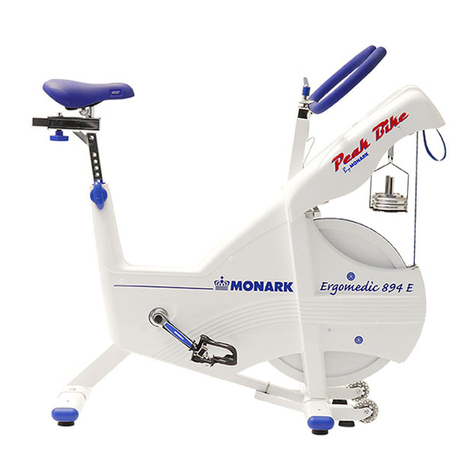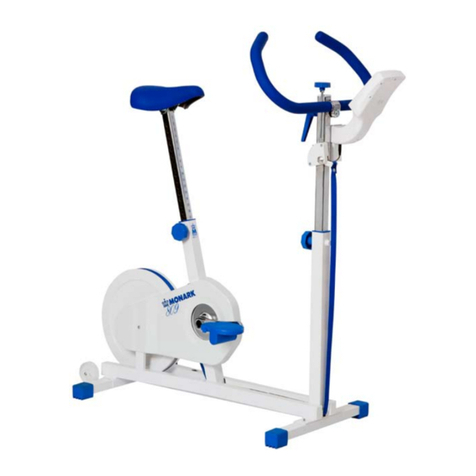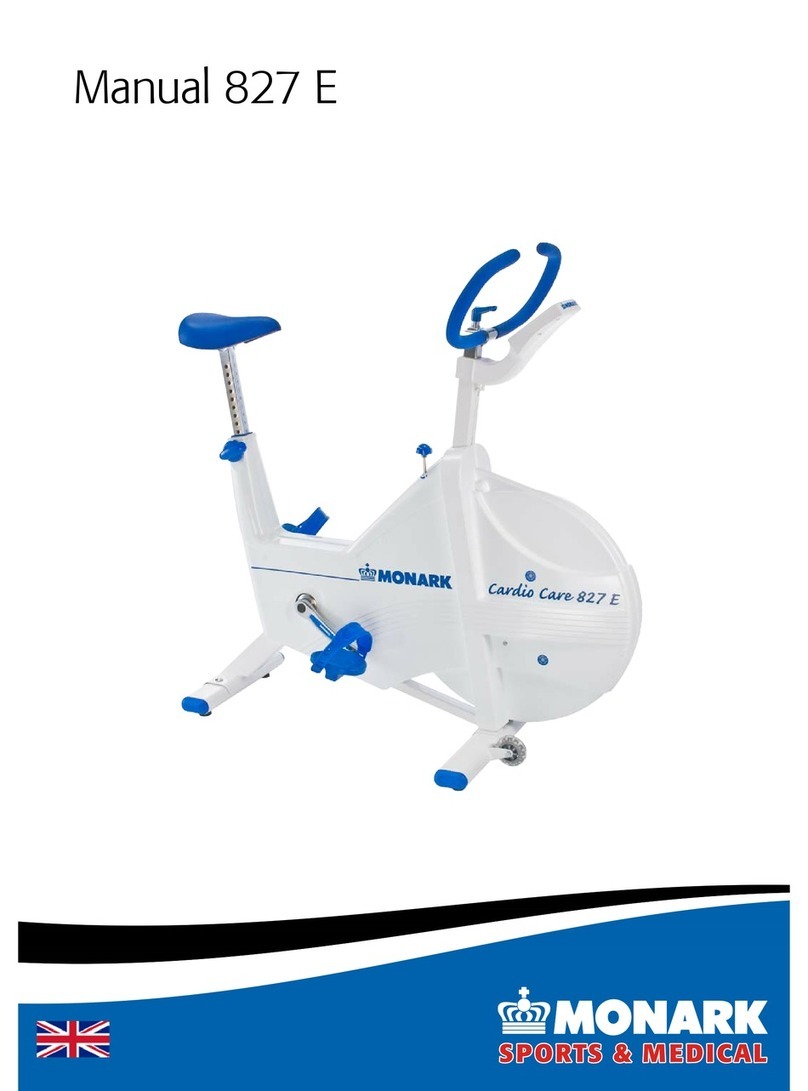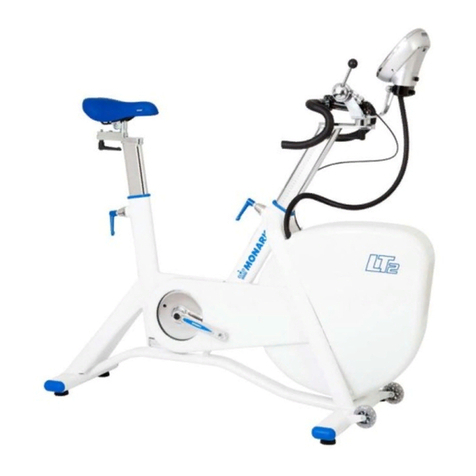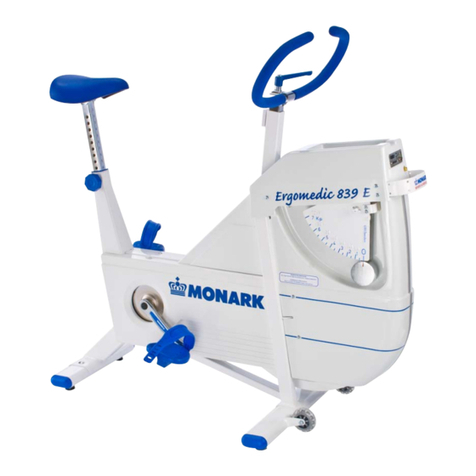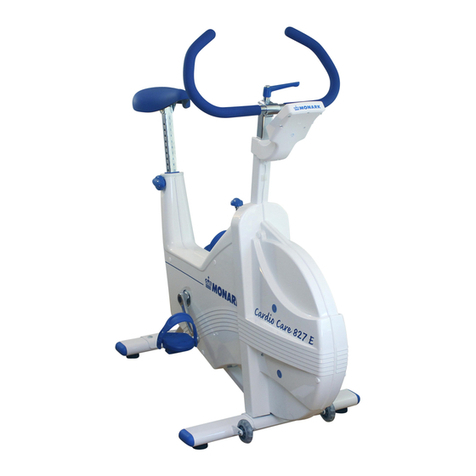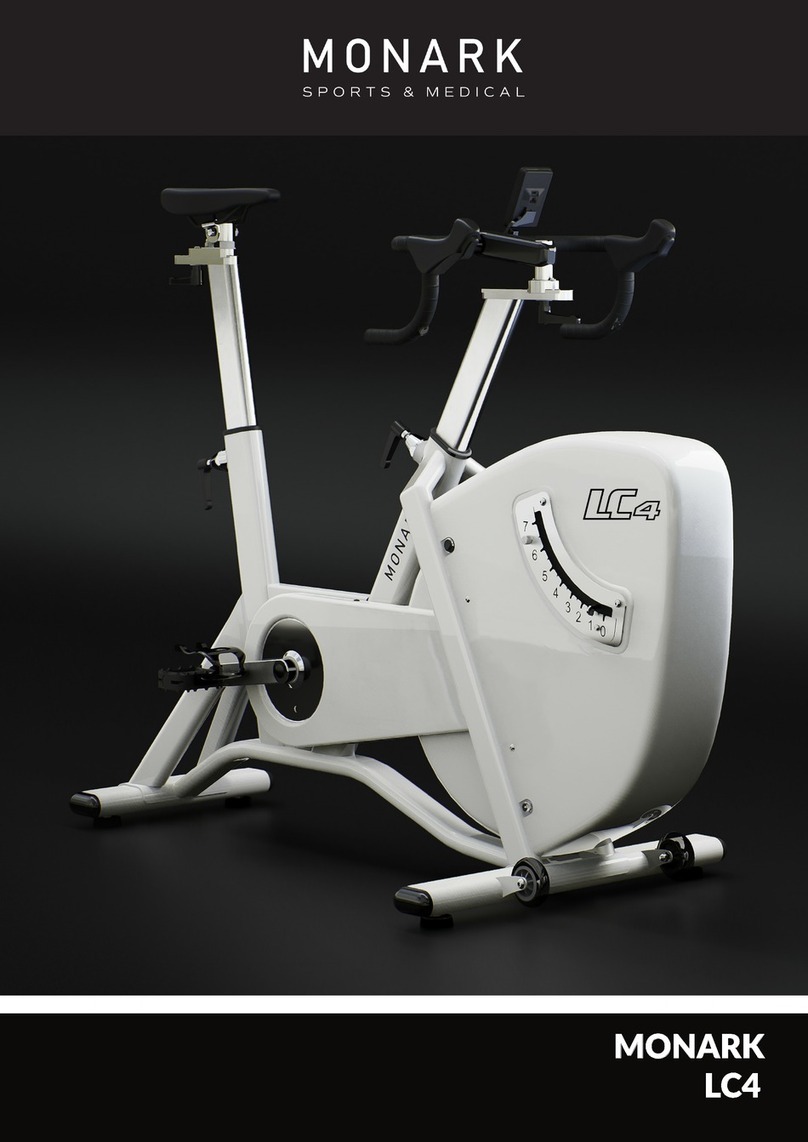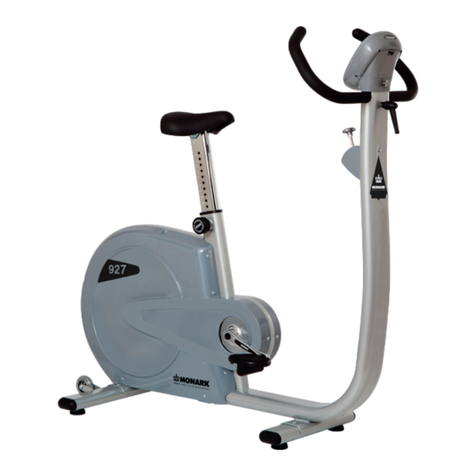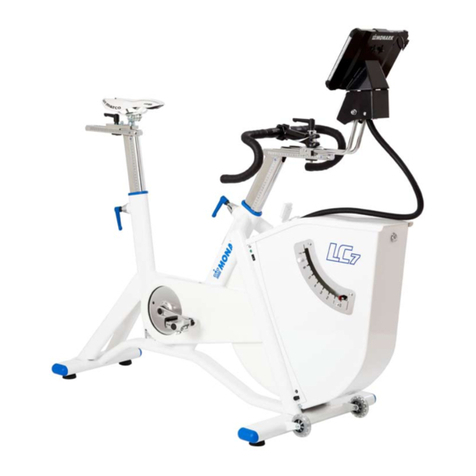How the bike works
LC6 novo and LC7 novo are based on a stable
frame, large well balanced flywheel, brake belt and
a pendulum that measures the braking force. The
pedals operate around the flywheel via a chain, while
a stretch mechanism tightens the brake belt to regulate
the braking force to affect the flywheel. This braking
force can be read directly by the pendulum on the
scale on the right side of the bike.
All changes in the friction between the brake belt
and the flywheel are compensated automatically by
Monark's unique construction.
New on LC6 novo and LC7 novo is that you can
control the bike from the display but the bike can, as
earlier models, even be controlled externally from PC
or other device. The display functions are described in
section "Monark novo display unit". The computer
system consists of Monark novo control unit (built in
the bike) and Monark novo display unit, PC or other
external device. Monark novo control unit registers
pedal speed and braking force, and also registers the
test person's heart rate if a chest belt or similar is used.
Monark novo control unit activates an actuator that
adjusts the brake belt tension, which regulates the
workload. This workload is varied automatically in
relation to changes in pedal speed, so that a constant
power is maintained. The bike is standard rpm
independent but can be set to also be rpm dependent
(constant force).
On both LC6 novo and LC7 novo the RS232- and
USB-B-ports are located on Monark novo control
unit behind the left side front cover. On LC7 novo the
USB-A connection is used by the PC tablet. These can
be freely used to connect external devices such as PC,
ECG, spirometry, etc. for which the external device
can control the workload and get real-time data such
as power, rpm, pulse and more from the bike.
For information about how respective control units
work, see section "Connection to external control
unit".
Here are instructions for connection and options for
connection to external devices. If advanced technical
documentation / data protocol for system builders or
similar are required, please contact Monark Exercise
AB.
Operating instruction Power on crank or ywheel
Monark bikes measure the effect of the flywheel, so it
will be a friction of 6-8% if you measure the impact of
the pedals (if the effect is measured on the crankshaft,
the difference is 4-5 %). The losses will be primarily
due to friction in the chain, pedals and bearings in the
wheels and crank.
LC6 novo and LC7 novo are designed for fitness tests
and are set to measure the power at the flywheel,
which is the traditional way in submaximal exercise.
The bike can be set to work with effect in the pedals /
crankshaft (the cycle constant).
Pulse measurement
The person's heart rate ("pulse") can be measured by
a chest belt, or similar heart rate monitor, that register
the pulse signal from your heart and sends it to the
bike with ANT+ or Bluetooth SMART technology.
More information is available in section "Monark
novo display unit".
The heart rate can be displayed in Monark novo
display unit, in Monark test software or in other
external device.
If you use chest belt
Heart rate monitoring requires that the chest belt is
correctly placed. When it is correctly fitted the logo
on the belt will be central and readable, outward and
upright, by another person. Before putting on the
belt, clean the skin where the belt is to be placed. The
chest belt should be secured at a comfortable tension
around the mid section, just below the breast muscle,
see Fig: Placement chest belt. Moisten the electrodes
before use, see Fig: Moistening the electrodes.
The images above are used with permission of Polar Sweden.
Fig: Placement chest belt
Fig: Fig: Moistening the electrodes
